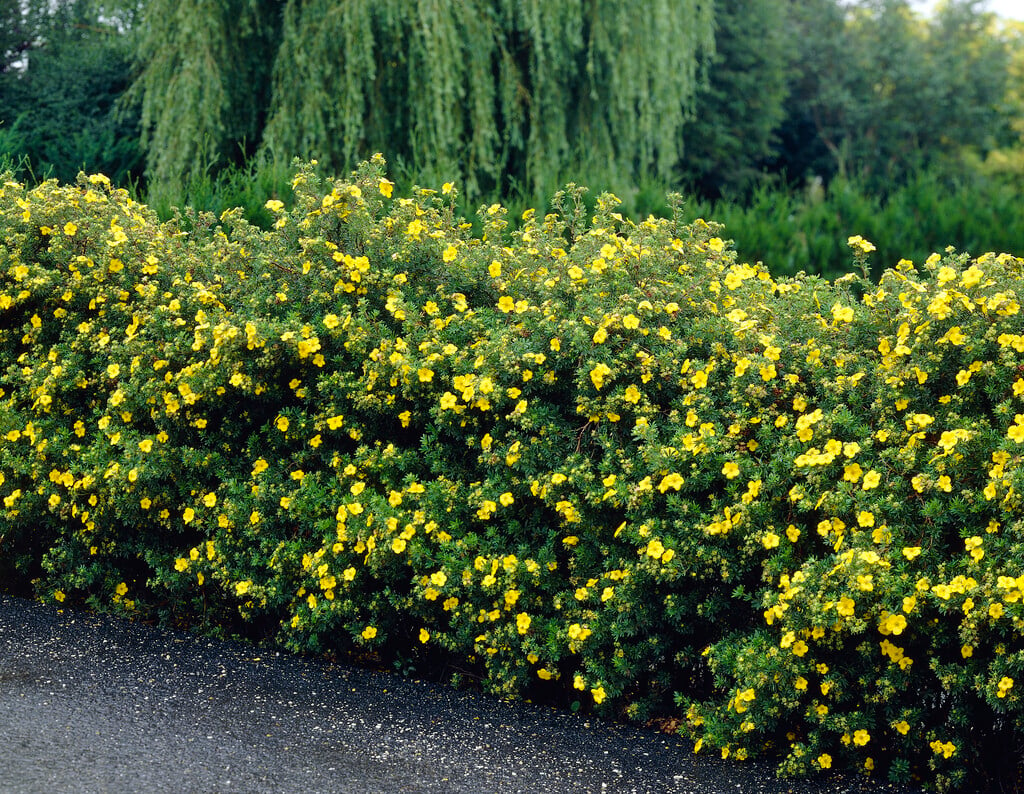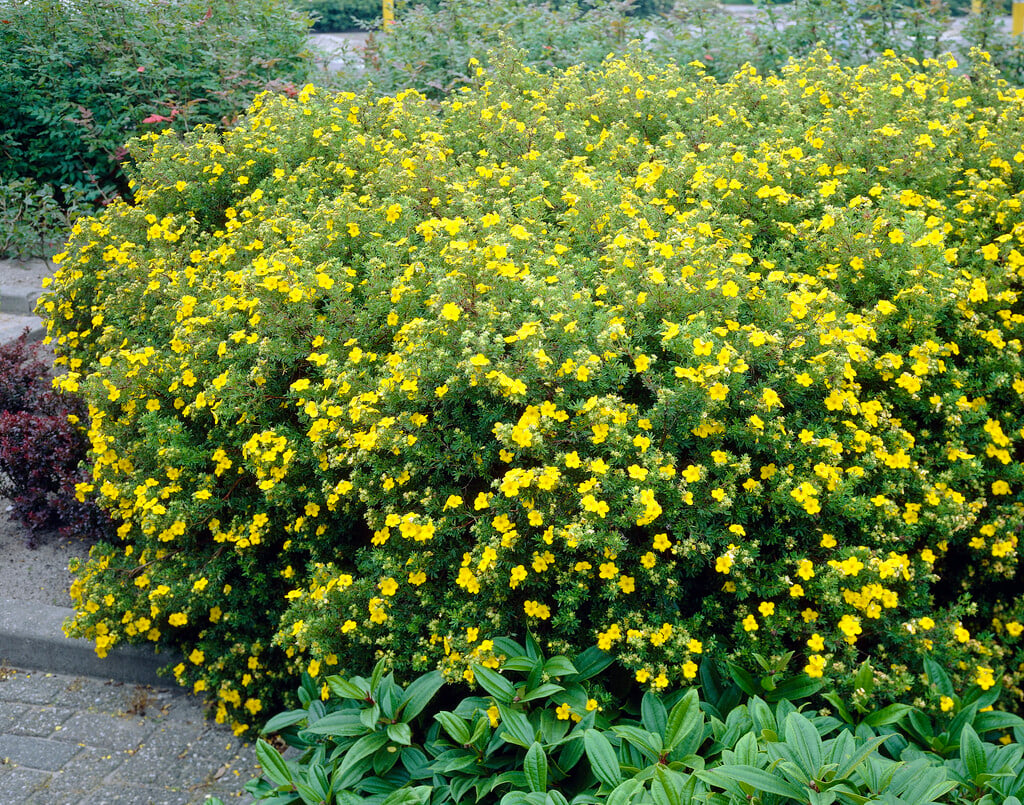Potentilla fruticosa
shrubby cinquefoil
A densely-branched deciduous shub slowly reaching 1.5m. It is grown for its 5-petalled yellow flowers produced over many months. Extraordinarily resilient
Size
Ultimate height
1–1.5 metresTime to ultimate height
5–10 yearsUltimate spread
1–1.5 metresGrowing conditions
Moisture
Moist but well–drainedpH
Acid, Alkaline, NeutralColour & scent
| Stem | Flower | Foliage | Fruit | |
| Spring | Yellow | Green | ||
|---|---|---|---|---|
| Summer | Yellow | Green | ||
| Autumn | Yellow | Green Yellow | ||
| Winter |
Position
- Full sun
- Partial shade
Aspect
East–facing or North–facing or South–facing or West–facing
Exposure
Exposed or Sheltered Hardiness
H7Botanical details
- Family
- Rosaceae
- Native to GB / Ireland
- Yes
- Foliage
- Deciduous
- Habit
- Bushy, Spreading branched
- Potentially harmful
- Fruit are ornamental - not to be eaten. Wear gloves and other protective equipment when handling. Pets: Fruit are ornamental - not to be eaten - see the HTA guide to potentially harmful plants for further information and useful contact numbers
- Genus
Potentilla can be herbaceous perennials, deciduous shrubs, or annuals, with palmately or pinnately divided leaves and solitary or clustered, saucer-shaped, 5-petalled flowers appearing over a long period
- Name status
Correct
How to grow
Cultivation
Grow in any moisture-retentive soil in good light
Propagation
Propagate by softwood cuttings in early summer
Suggested planting locations and garden types
- Cottage and informal garden
- Coastal
- Wildlife gardens
- Flower borders and beds
Pruning
Pests
Generally pest-free
Diseases
May be susceptible to honey fungus
Get involved
The Royal Horticultural Society is the UK’s leading gardening charity. We aim to enrich everyone’s life through plants, and make the UK a greener and more beautiful place.

